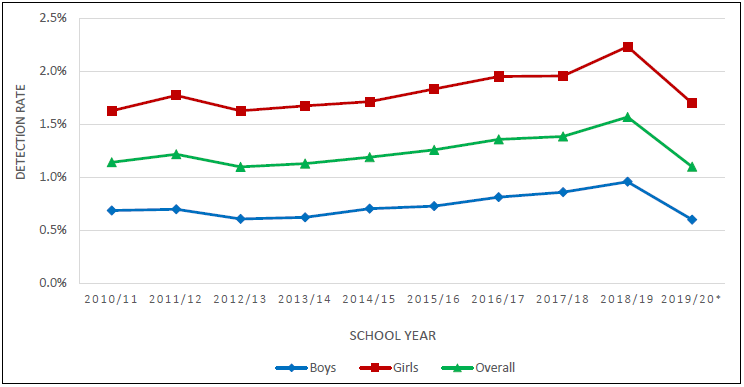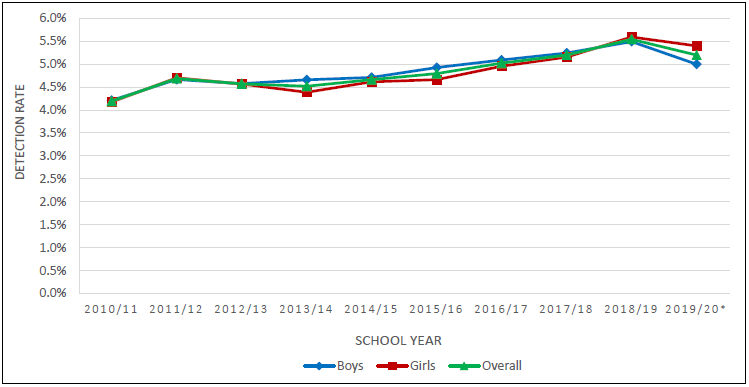Wasting
Poor nutrition and underlying physical or mental health conditions can result in wasting. Anorexia Nervosa, a type of eating disorder, is a potential cause of wasting among youth. It is characterised by distorted body image, fear of becoming fat and excessive dieting that leads to severe weight loss. The onset of Anorexia Nervosa usually emerges during adolescence. If left untreated, it can lead to wide-ranging medical complications, irreversible damages to the bodies or even death.
For more information on wasting among youth, please refer to the following websites:
Student Health Service
Statistics on Wasting among Local Youth
(1) Detection rate of wasting of primary school students by sex from school year 2010/11 to 2019/20.

(2) Detection rate of wasting of secondary school students by sex from school year 2010/11 to 2019/20.

Notes:
- Wasting is defined as weight < 80% of the median weight for height or BMI < 18.5 for boys with height > 175cm and for girls with height > 165cm.
- These growth standards were developed locally according to the findings of a territory-wide survey on 25 000 individuals ranging from birth to 18 years old conducted in 1993 by the Department of Health, the Hospital Authority and the Chinese University of Hong Kong.
- * Annual health assessment had been suspended since 29.1.2020 in 2019/20 school year due to COVID-19. In view of serious service disruption affecting the number and pattern of attending students in 2019/20 school year, direct comparison of the data in 2019/20 with that of previous years has to be done with caution.
Source of data:
Data based on anthropometric measurement of primary and secondary students attending Student Health Service Centres of the Department of Health.